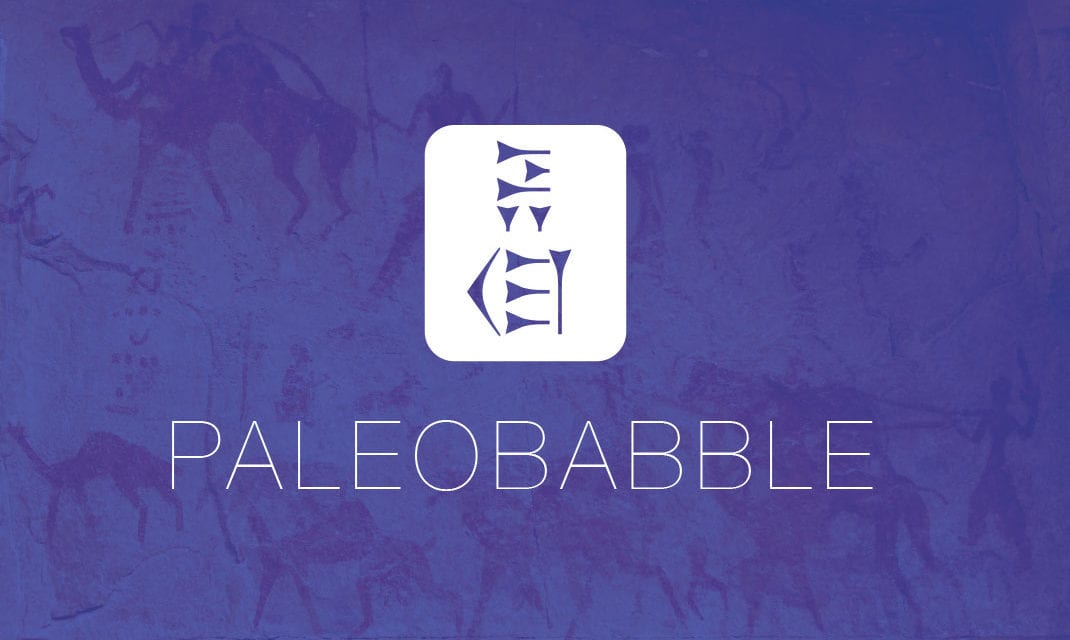Talk about great timing. Just this past Wednesday in my Ancient Israel class at Western Washington University I covered some of the hokey “evidences” put forth by less-than-reputable Christian archaeologists in defense of Jebel el-Lawz as the true location of Mount Sinai. In briefer terms, the Ron Wyatt (see here also) and Robert Cornuke nonsense (see here, here, and here). Cornuke’s adventures (if they occurred) at Jebel el-Lawz, you may recall, were chronicled in a book by Howard Blum (“The Gold of Exodus”) that got reviewed in Biblical Archaeology review under the wonderful title, “Yahoos in Arabia.”
Now, mind you, I do think a good case can be made for Jebel el-Lawz as the location of Mount Sinai (though I’m not married to it). I just think real scholars like Frank Moore Cross of Harvard (now retired) are the people to pay attention to for a defense of that view).1
So now we have the latest archaeo-fiasco. The Jebel el-Lawz view is sullied once more by Christian archaeological amateurism and perhaps fakery. This time it’s an alleged “Yahweh inscription” from Jebel el-Lawz. You can read about the inscription and the claims surrounding it in this debunking by Gordon Franz. It includes a picture (hand drawing) of the object. The lettering on the inscription, which some experts consider a fake, is not epigraphic Hebrew, nor proto-Sinaitic. It’s Old South Arabian script. You can click here to check a South Arabian alphabet and follow the discussion of the letters more easily.
- Note that in saying this, I’m telegraphing the fact that I am not persuaded against Cross’s position by the Jebel el-Lawz debunking by Gordon Franz, the same fellow to whom I’ve directed readers of this post for the Yahweh inscription debunking. I don’t think the Jebel el-Lawz location is without problem, but Franz’s arguments against it aren’t that compelling since they have other answers than the conclusions he draws. It’s just too bad that Jebel el-Lawz gets colored as silly because of people like Wyatt and Cornuke. ↩






Mike:
Not sure if you are aware of this website and the film that is being produced concerning this whole subject. I thought it would be interesting to include in light of your recent post. I would be interested in your thoughts. Here is the link: http://www.exodusconspiracy.com/index.html
@tpearce: Yep, I’m aware of it (I’m on their mailing list). If the movie ever airs, I suspect that it will revive either the Tanir crossing of the Gulf of Aqaba or the Nuweiba crossing point (also Aqaba Gulf). Both lead to Midian. I have no problem with the Midian view; it’s just that a lot of paleobabble has accrued to it (unfortunately).
If Mount Horeb is in Sinai wouldn’t the Red Sea [or, if it is preferred, “Reed Sea” or “Sea of Reeds”] have to have been crossed from within Mizraim since the “Mountain of God” was only reached after a “Sea” was crossed? Where, then, from within Mizraim, was a “Sea” crossed into Sinai? Lake Timsa is out of the question since it rarely exceeds a depth of 3 feet. The Bitter Lakes [which some say is the Reed Sea or Sea of Reeds although there is another candidate] has, today, a mean depth of 16 feet, and the Gulf of Suez [also called the “Red Sea”] is between 40 and 60 feet deep. How did 600,000 + people, animals, and carts get to the bottom of the Bitter Lakes” 16 feet drop so so as to walk across its bottom or the 40 to 60 feet drop in the Gulf of Suez or up to the tops on the other sides? Israel did not cross on thin air or, if so. that truely was super-natural. Wouldn’t some sort of land bridge or land mass above the bottoms allowing easy transition from the shores wide enough and long enough that could be walked across be required? Have any been found? If none have been found at those locations, or if there were none at the time of the exodus, wouldn’t a crossing at any of those locations, or any other location, have been, if not impossible, extremly difficult? Or was one produced for the occasion and is no longer there being, in the course of 3000 + years, washed away? That will probably be the answer given and the question then is, “how is that known” and Isaiah 43:16 will be pointed to. In which case God not only divided the waters into walls on both sides by an “east wind” but also raised the land mass beneath the waters, presumbably 16, 40, or 60 feet high wide enough and long enough [20 miles in the case of the Gulf of Suez (Red Sea)] to walk across which, in the course of 3000 + years washed away. Or did the land mass decline when the waters collapsed taking Pharoah’s chariots and army to the bottom? So, for one of those reasons, no land mass fitting the necessities have been found at those locations. Where, then, from within Mizraim was a “Sea” crossed into Sinai? And how?
I’m not going through all the views here; I’m familiar with them, and readers can look them up. “Sea” can refer to any body of water; hence all the views. The only real interpretive key we get is the reference to (Pi)ha-hiroth, which in Egyptian means “mouth of the canal” (see Exod 14:2, 9). Hoffmeier has located this canal via satellite photography, but the problem is we don’t know (a) which way the procession was traveling in places, (b) where exactly they were when they turned BACK to Pi-hahiroth (Exod 14:1; Num 33:7); and (c) why it is that Numbers 33 has them passing through the “red sea,” then moving three days, and then camping by the “red sea”!? (Num 33:8,11).
There are lots of theories supporting various routes. People can look them up.